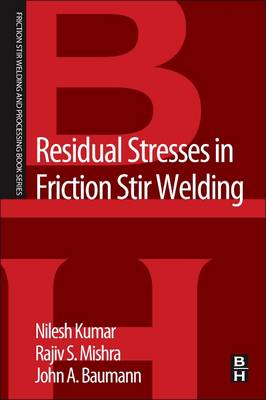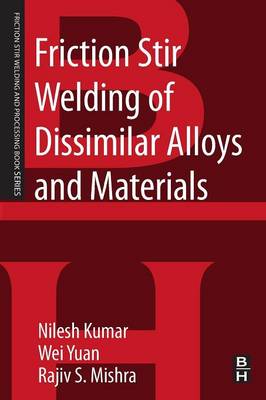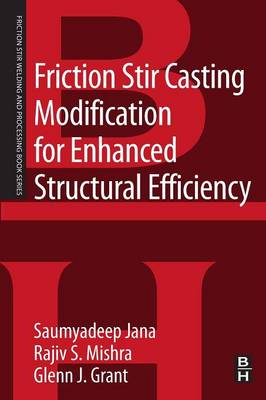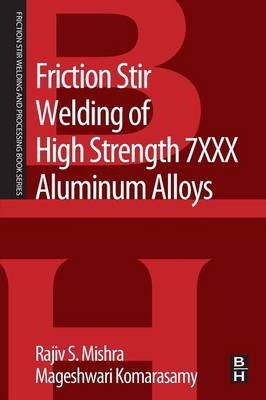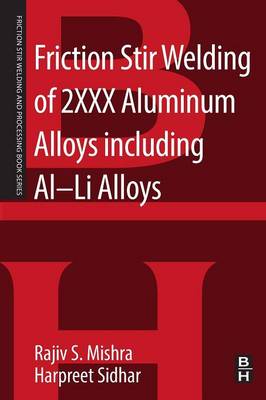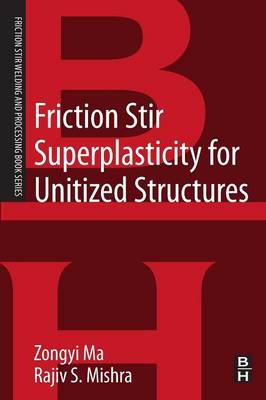Friction Stir Welding and Processing
7 total works
Residual Stresses in Friction Stir Welding
by Nilesh Kulkarni, Rajiv S. Mishra, and John A. Baumann
Published 25 November 2013
This book describes the fundamentals of residual stresses in friction stir welding and reviews the data reported for various materials. Residual stresses produced during manufacturing processes lead to distortion of structures. It is critical to understand and mitigate residual stresses. From the onset of friction stir welding, claims have been made about the lower magnitude of residual stresses. The lower residual stresses are partly due to lower peak temperature and shorter time at temperature during friction stir welding. A review of residual stresses that result from the friction stir process and strategies to mitigate it have been presented. Friction stir welding can be combined with additional in-situ and ex-situ manufacturing steps to lower the final residual stresses. Modeling of residual stresses highlights the relationship between clamping constraint and development of distortion. For many applications, management of residual stresses can be critical for qualification of component/structure.
Friction Stir Welding of Dissimilar Alloys and Materials
by Nilesh Kulkarni, Rajiv S. Mishra, and Wei Yuan
Published 1 January 2015
This book will summarize research work carried out so far on dissimilar metallic material welding using friction stir welding (FSW). Joining of dissimilar alloys and materials are needed in many engineering systems and is considered quite challenging. Research in this area has shown significant benefit in terms of ease of processing, material mixing, and superior mechanical properties such as joint efficiencies. A summary of these results will be discussed along with potential guidelines for designers.
Friction Stir Casting Modification for Enhanced Structural Efficiency
by Saumyadeep Jana, Rajiv S. Mishra, and Glenn Grant
Published 27 October 2015
Friction Stir Casting Modification for Enhanced Structural Efficiency: A Volume in the Friction Stir Welding and Processing Book Series summarizes current research and applications of friction stir processing techniques for casting modification.
Research in this area has shown significant benefit in terms of fatigue performance as a result of friction stir processing. This book addresses the latest research, providing readers with a summary of these results and new guidelines for designers.
Research in this area has shown significant benefit in terms of fatigue performance as a result of friction stir processing. This book addresses the latest research, providing readers with a summary of these results and new guidelines for designers.
Friction Stir Welding of High Strength 7XXX Aluminum Alloys
by Rajiv S. Mishra and Mageshwari Komarasamy
Published 13 June 2016
Friction Stir Welding of High Strength 7XXX Aluminum Alloys is the latest edition in the Friction Stir series and summarizes the research and application of friction stir welding to high strength 7XXX series alloys, exploring the past and current developments in the field.
Friction stir welding has demonstrated significant benefits in terms of its potential to reduce cost and increase manufacturing efficiency of industrial products in transportation, particularly the aerospace sector. The 7XXX series aluminum alloys are the premium aluminum alloys used in aerospace. These alloys are typically not weldable by fusion techniques and considerable effort has been expended to develop friction stir welding parameters. Research in this area has shown significant benefit in terms of joint efficiency and fatigue performance as a result of friction stir welding. The book summarizes those results and includes discussion of the potential future directions for further optimization.
Friction stir welding has demonstrated significant benefits in terms of its potential to reduce cost and increase manufacturing efficiency of industrial products in transportation, particularly the aerospace sector. The 7XXX series aluminum alloys are the premium aluminum alloys used in aerospace. These alloys are typically not weldable by fusion techniques and considerable effort has been expended to develop friction stir welding parameters. Research in this area has shown significant benefit in terms of joint efficiency and fatigue performance as a result of friction stir welding. The book summarizes those results and includes discussion of the potential future directions for further optimization.
Friction Stir Welding of 2XXX Aluminum Alloys including Al-Li Alloys
by Rajiv S. Mishra and Harpreet Sidhar
Published 10 October 2016
Friction Stir Processing of 2XXX Aluminum Alloys including Al-Li Alloys is the latest edition in the Friction Stir Welding and Processing series and examines the application of friction stir welding to high strength 2XXX series alloys, exploring the past and current developments in the field. The book features recent research showing significant benefit in terms of joint efficiency and fatigue performance as a result of friction stir welding.
Friction stir welding has demonstrated significant benefits in terms of its potential to reduce cost and increase manufacturing efficiency of industrial products including transportation, particularly the aerospace sector. The 2XXX series aluminum alloys are the premium aluminum alloys used in aerospace.
The book includes discussion of the potential future directions for further optimization, and is designed for both practicing engineers and materials scientists, as well as researchers in the field.
Friction stir welding has demonstrated significant benefits in terms of its potential to reduce cost and increase manufacturing efficiency of industrial products including transportation, particularly the aerospace sector. The 2XXX series aluminum alloys are the premium aluminum alloys used in aerospace.
The book includes discussion of the potential future directions for further optimization, and is designed for both practicing engineers and materials scientists, as well as researchers in the field.
Friction Stir Processing for Enhanced Low Temperature Formability
by Christopher B Smith and Rajiv S. Mishra
Published 26 March 2014
The use of friction stir processing to locally modify the microstructure to enhanced formability has the potential to alter the manufacturing of structural shapes. There is enough research to put together a short monograph detailing the fundamentals and key findings. One example of conventional manufacturing technique for aluminum alloys involves fusion welding of 5XXX series alloys. This can be replaced by friction stir welding, friction stir processing and forming. A major advantage of this switch is the enhanced properties. However qualification of any new process involves a series of tests to prove that material properties of interest in the friction stir welded or processed regions meet or exceed those of the fusion welded region (conventional approach). This book will provide a case study of Al5083 alloy with some additional examples of high strength aluminum alloys.
Friction Stir Superplasticity for Unitized Structures
by Zongyi Ma and Rajiv S. Mishra
Published 29 May 2014
This book describes the fundamentals and potential applications of 'friction stir superplasticity for unitized structures'. Conventional superplastic forming of sheets is limited to the thickness of 3 mm because the fine grained starting material is produced by rolling. Friction stir superplasticity has grown rapidly in the last decade because of the effectiveness of microstructural refinement. The thickness of the material remains almost constant, and that allows for forming of thick sheets/plates, which was not possible before. The field has reached a point where designers have opportunities to expand the extent of unitized structures, which are structures in which the traditional primary part and any supporting structures are fabricated as a single unit. With advanced optimization and material considerations, this class of structures can be lighter weight and more efficient, making them less costly, as well as mechanically less complex, reducing areas of possible failure.
